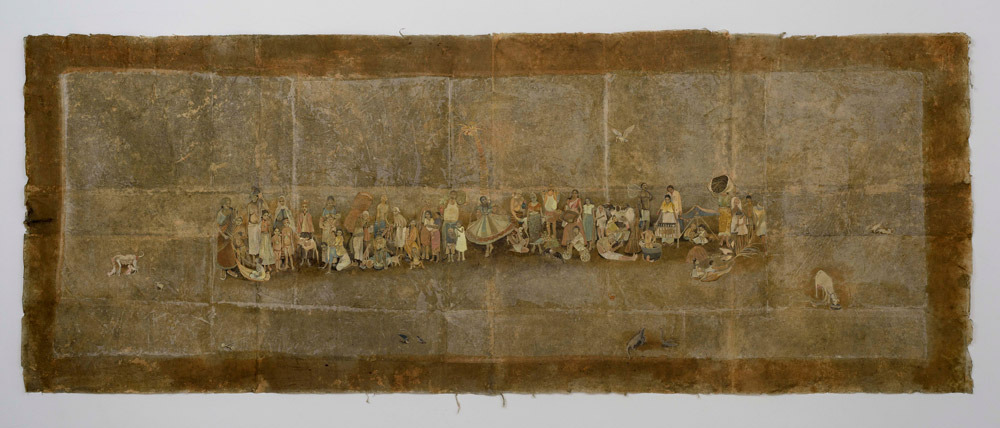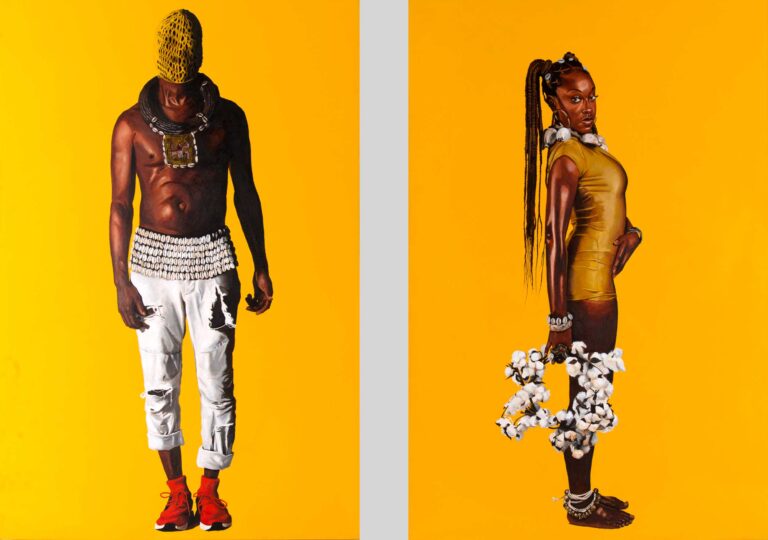VISIT OUR VIRTUAL TOUR FOR THIS EXHIBITION
The works in this exhibition reflect today’s India . . . the fragile links between her diverse populations and the threats to the land on which they live.
In the final decades of the 20th century, with the advent of economic globalization, doors opened for artists to compete for international fellowships, art fairs and gallery exhibitions. Those enriching experiences have led to greater understanding of the world’s cultures, histories, and contemporary art. As the new millennium has begun to evolve and Indian artists have turned to more conceptual practices, it appears that exposure to internationalism has stimulated in many of them an expanded awareness, compassion, and concern for their native country.


As one of the world’s oldest civilizations, India is home to 461 indigenous tribes, numerous religious sects, and countless ethnically diverse people. With industrialization, forests have been depleted and farmers have been forced to find low-paid employment in overcrowded cities, adding to already alarming levels of pollution and increased threats to climate warming.
Within this complex mélange, victims of gender and sexist issues, religious persecution and caste discrimination have begun to express their needs for civil rights and fair treatment.
This exhibition’s artists have faced aspects of all these realities and given them visible expression. Some have moved beyond expressing their ideas visually to active involvement in issues that are important to them.



Gauri Gill is one such artist. For a number of years, she has served as an artist-in-residence at tribal schools. In 2013, her focus as a documentary photographer took a new turn. While at a school in the Warli community of Ganjad, she stayed with a family who had worked for generations as traditional painters. These artists continue to use an ancient language of symbols to document important community events. This chance meeting resulted in Gill working collaboratively with her host, Rajesh Vangad, who appears in each photograph taken at significant local sites. Gill then asked Vangad to add Warli characters across the photographs. One of these altered images is exhibited next to an excellent example of a large Warli painting.


Several artists have combined ecological activism with their creative practices. After completing graduate studies, H. G. Arunkumar visited his family’s farm in Southwest India. He was appalled to find depleted cropland, rampant erosion, deforestation and industrial pollution. He moved back permanently and began leading a cooperative effort with neighbors to forge sustainable farming practices and good land management. He has reflected these concerns in his sculptures by using only reclaimed materials and content that speaks to his group’s concerns.


Finally, while the importance of spirituality remains an important part of Indian art, its dogmatic edge has dissolved and artists such as G. R. Iranna offer more universal messages encouraging a balanced journey through life.
We are grateful to Karen and Robert Duncan and Kathryn and Marc LeBaron for once again making their wonderful collections available for this exhibition. We would be remiss not to acknowledge the guidance and friendship that Birgid Uccia offered the Duncans and LeBarons during their visits to India. Appreciation is also due our staff who, again, gave 110 percent to organize this exhibition.





